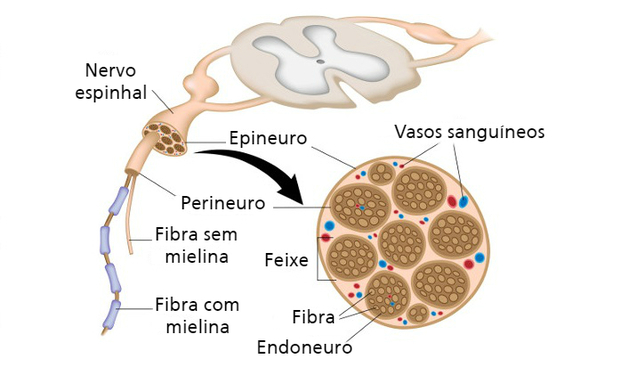Diplopods are a group of animals belonging to the Arthropoda phylum which have as their most striking feature the fact that they have two pairs of legs per body segment. These animals have an elongated, cylindrical or slightly flat body, and are popularly known as embuás, snake lice or gongolos.
To date, about 10,000 species of millipedes are recognized, which vary enormously in size. While some species are about 2 mm long, others reach approximately 30 cm.
Read too: Annelids - animals that also have a body formed by segments
What are diplopods?
Diplopods or millipedes are animals that are part of the Myriapoda clade, a group belonging to the phylum of arthropods. The name millipedes is a reference to the fact that these animals have a large number of legs, but this number is less than a thousand, as suggested by the group's name.

Diplopod Characteristics
As diplopods are part of the arthropod phylum, they have the typical characteristics of this group. Like the other representatives of this phylum, they stand out for presenting a body covered by a external skeleton (exoskeleton) consisting of chitin and a segmented body with appendages articulated. Are animals:
coelom (they have a body cavity, called coelom, coated with tissue derived from the mesoderm);
triblastic (have three embryonic leaflets);
protostomes (blastopore gives rise to mouth); and
with bilateral symmetry (body can be divided into two equal halves).
the diplopods present complete digestive system. Gas exchange takes place through a tracheal system. Excretion is done by Malpighi tubules. The reproduction of these animals, in turn, is sexual and they lay eggs.
Do not stop now... There's more after the advertising ;)
diplopod body
The diplopods present elongated body, which is composed, according to some authors, by the head and trunk and, by others, by the head, thorax and abdomen. In this group the trunk segments are double, derived from the fusion of two originally separate somites. These double segments are called diplossegments.. From each diplossegment two pairs of legs depart, one of the most striking features of the group.
The head of the diplopod is dorsally convex and ventrally flat. This is where the sensory organs such as eyes and antennae (a pair) are found, as well as the mouthparts. Most species have a body with black color and brown tones, however there are red and orange species with mottled or painted patterns.
Habitat and behavior of diplopods
The diplopods are land animals, being found living in places such as rocks, tree bark, trunks and under leaves, generally avoiding direct light. Some species are found in caves. They are spread all over the planet (except Antarctica), but are found especially in the tropics.

the diplopods move slowly plink ground, being its wave locomotion system. They generate great impact on the soil, highlighting their litter fragmenting activity, which promotes the stimulation of microbial activity and exerts an indirect influence on the flow of nutrients.Most species are herbivore, feeding preferably on decaying vegetables. There are also predatory and other omnivorous species.
As they move slowly, when trying to escape a predator, they may not achieve the expected result. To ensure protection, these animals curl up, being protected by their exoskeleton, which is impregnated with limestone, protecting the animal superiorly and laterally. Some species are able to release a malodorous secretion, which also helps protect them. Millipedes live about 10 years.
Read too: Invertebrates — animals without a skull and spine
Difference between diplopods and chilopods
So much Chilopods such as diplopods are arthropods of the Myriapoda clade. They have in common the fact that they have an elongated body, a pair of antennas and three pairs of appendages modified as mouthparts. These animals stand out for being also terrestrial.
Despite their similarities, we can highlight some differences between these two groups. One of them is related to the number of legs. While chilopods have only one pair of legs per body segment, millipedes have two pairs. Also, chilopods are animals. carnivores, while most millipedes are herbivores. To learn more about chilopods, read our specific text: Chilopods.
By Vanessa Sardinha dos Santos
Biology teacher
Would you like to reference this text in a school or academic work? Look:
SANTOS, Vanessa Sardinha dos. "Diplopods"; Brazil School. Available in: https://brasilescola.uol.com.br/biologia/diplopodes.htm. Accessed on June 27, 2021.
Biology

Expand your knowledge about crustaceans, animals well known for being part of the diet of many people. In this text, we will address the main characteristics of crustaceans, their way of feeding, breathing, reproduction and we will also get to know some examples of these animals.


